 Maria Modugno has had an amazing career in children’s literature. Currently, she serves as Executive Editorial Director at Random House Studio, an imprint of Random House Books for Young Readers. Prior to that, she was vice president and Editorial Director at HarperCollins Children’s Books where she acquired such popular series as Pinkalicious by Victoria Kann and Splat the Cat by Rob Scotton. She also worked at Harcourt Brace Jovanovich and Little, Brown.
Maria Modugno has had an amazing career in children’s literature. Currently, she serves as Executive Editorial Director at Random House Studio, an imprint of Random House Books for Young Readers. Prior to that, she was vice president and Editorial Director at HarperCollins Children’s Books where she acquired such popular series as Pinkalicious by Victoria Kann and Splat the Cat by Rob Scotton. She also worked at Harcourt Brace Jovanovich and Little, Brown.
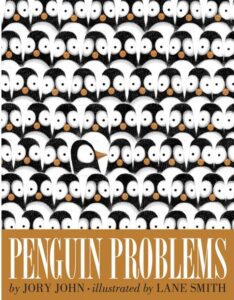 Some of her recent titles for Random House Studio include Uni the Unicorn by Amy Krouse Rosenthal and illustrated by Brigette Barrager, Grumpy Monkey, written and illustrated by Suzanne and Max Lang, Penguin Problems by Jory John and illustrated by Lane Smith, and Attack of the Underwear Dragon by Scott Rothman and illustrated by Peter Oswald.
Some of her recent titles for Random House Studio include Uni the Unicorn by Amy Krouse Rosenthal and illustrated by Brigette Barrager, Grumpy Monkey, written and illustrated by Suzanne and Max Lang, Penguin Problems by Jory John and illustrated by Lane Smith, and Attack of the Underwear Dragon by Scott Rothman and illustrated by Peter Oswald.
Yeah, I’m pretty excited to learn more about all Maria does. Let’s find out together!
RVC: You’re living in Chicago these days?
MM: When we went fully remote, I left New York after 20 years and moved to Evanston. It’s right outside Chicago.
RVC: I’m from Chicago myself. My brother still lives in the suburbs.
MM: Oh, it’s great. My family’s out here, too. Whoever thought businesses would go remote and then say, “Sure, take off! Go wherever you want!”
RVC: This industry is well suited for it.
MM: You’re right. We do everything electronically now. I can work from Chicago as easily as I could work with people back when I was in New York.
RVC: Let’s circle back to the start. You’re a lifelong lover of reading and books.
MM: I just loved books even though I grew up in a really small town with a really small library. Kids were only allowed to take out three books a week. Maybe it was because of that rarefied status that I knew books were something really great. My family says I have the Reading Gene. Those who have it, walk around with a book in our hands all the time.
Honestly, if I could do anything in the world, I’d just want to read!
RVC: Speaking of reading…what were some of your special early reading experiences?
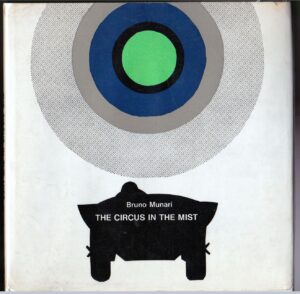 MM: They’ve fallen out of fashion, but I love the Little House on the Prairie books. And there was a picture book from Italy called The Circus in the Mist which had opaque and different kinds of paper. I was fascinated by it.
MM: They’ve fallen out of fashion, but I love the Little House on the Prairie books. And there was a picture book from Italy called The Circus in the Mist which had opaque and different kinds of paper. I was fascinated by it.
I just loved picture books, like Millions of Cats by Wanda Gág. At one point, Tomie dePaola took me took me to the Kerlan Collection at the University of Minnesota where they have all this art. Tomie asked, “What would you like to see?” And I was able to look at the original art for Millions of Cats.
RVC: Terrific.
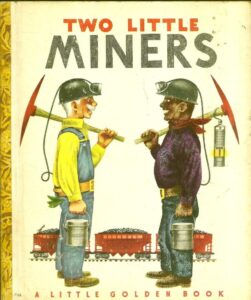 MM: I also loved Two Little Miners, a Golden Book. Young readers really don’t have very discriminating taste.
MM: I also loved Two Little Miners, a Golden Book. Young readers really don’t have very discriminating taste.
RVC: So long as you love what you’re reading, it’s all fine in my mind.
MM: I wish I could say something profound to your question, like “Oh, I loved The Little Prince.” But no, whenever you hand me something, I’ll read it, you know?
RVC: I totally get it. Now, when did you realize that kidlit was the career for you? Is that what you studied at University of Vermont?
MM: No, I was an English major who specialized in poetry mostly because that’s what I was drawn to. I started out being a science major, but I found I was spending most of my time in the stacks pulling down books and just reading. Studying poetry helps me with editing manuscripts because in a picture book, every word has to count. Every word carries a big burden–it has to say more than just one word typically does.
RVC: You brought up Tomie a moment ago. Rumor has it that he taught you how to become an editor.
MM: I was so lucky. I knew Tomie because my first job in publishing was in marketing. I had toured with him because of that, when Harcourt moved to California, they put me in charge of the editorial department because no one else wanted to pack up and move to the West Coast. I was young and stupid enough to say “Sure, why not?”
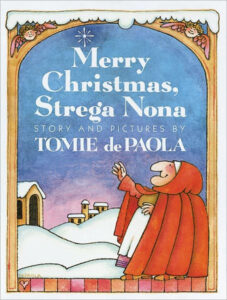 I found out we had a contract with Tomie and I said, “Tomie, what are we going to do? I don’t know how to edit.” He generously said, “Why don’t you come out to Whitebird for the weekend, and I’ll teach you.” And so I packed up my warm clothes and went. We talked through the idea of the whole book together–Merry Christmas, Strega Nona. We carefully went through the story and its arc. Then Tomie said, “Now I’ll go off and write it.”
I found out we had a contract with Tomie and I said, “Tomie, what are we going to do? I don’t know how to edit.” He generously said, “Why don’t you come out to Whitebird for the weekend, and I’ll teach you.” And so I packed up my warm clothes and went. We talked through the idea of the whole book together–Merry Christmas, Strega Nona. We carefully went through the story and its arc. Then Tomie said, “Now I’ll go off and write it.”
Then he brought the manuscript back to me and said, “Go read it, but don’t change any of my words. Just question things in the margin if something doesn’t sound right. Read it out loud to make sure it sounds right–not just reads right.” And I did exactly that. Then we met up and discussed my comments.
Through that, Tomie instilled in me the importance of someone else’s words. You don’t just trash them off the page. The author put them there for a reason, so let the author make changes when something’s not clear.
That’s how I started as an editor.
RVC: Wow, you were so lucky to have worked with someone like that.
MM I was lucky indeed.
RVC: Fairly early in your career, you went from being an editor to being in charge of editors, which is more like an administrative role.
MM: That’s right. I went from being a marketing manager to being a director of the department. I did that at Harcourt and I did that at Little, Brown and then at Harper, though I was never really happy with that role. I really, really love working on books. That’s what I want to do. Honestly, in publishing, that’s not what’s valued most–what’s valued most is being able to run things and stuff like that. And so I’ve given up a lot of that.
RVC: But that allows you to have your hands on a lot of creative efforts these days, right?
MM: Oh, yeah. At the end of the day, that’s what I want to do. That’s what makes me happy.
RVC: Can you share what the acquisition process is like for picture books?
MM: I’m part of a very small imprint at Random House–it was just founded three years ago. It’s run by Lee Wade, our publisher who’s formerly of Schwartz and Wade, and there are four editors and two designers here. Basically, when I see something I want to sign up, I discuss it with Lee and we talk about what I want to pay for it. It’s as easy as that. I also have to run a P&L [profit & loss statement], which means I have to gather sales data and track information. But I never ask an author to make changes until they have a contract in hand.
RVC: That doesn’t seem to be the norm these days. There seems to be a lot of R&Rs (revise and resubmit) requests before the potential contract arrives. Or not.
MM: When I read a manuscript, it’s either there or it’s not. I can see what needs to be done, and I see that it can be done. I can’t take a manuscript that’s a good idea but is badly written and make that good. That’s not my skill set. But if there’s something there that’s good and I can see where it needs to go? I’m all in.
RVC: Could you talk a bit about working on some of the bigger projects? As you were working on projects like Pinkalicious or Splat the Cat how big they’d become?
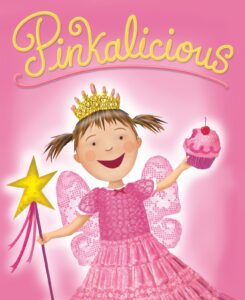 MM: Here’s the truth. I never imagined going beyond the first book with any of these. I liked Pinkalicious simply because I thought it was a great idea. You eat too many pink cupcakes, you turn pink. I also like that the little girl sticks her tongue out at me–that’s such a kid thing to do. I was surprised when it took off. I think some of it was shrewd marketing on the part of Harper because Fancy Nancy had just come out and Pinkalicious rode the coattails of that success.
MM: Here’s the truth. I never imagined going beyond the first book with any of these. I liked Pinkalicious simply because I thought it was a great idea. You eat too many pink cupcakes, you turn pink. I also like that the little girl sticks her tongue out at me–that’s such a kid thing to do. I was surprised when it took off. I think some of it was shrewd marketing on the part of Harper because Fancy Nancy had just come out and Pinkalicious rode the coattails of that success.
With Splat the Cat, I was at a stationery show and Rob Scotton was there selling mugs and prints. I saw this mug he had with a sheep on it, and that became Russell the Sheep. We just took that image and expanded it. The character of Russell was very involved, in spite of not really having a mouth. I found out that it’s really hard to have a character express emotions without one, so I said to Rob, “Let’s find another character that we can develop.”
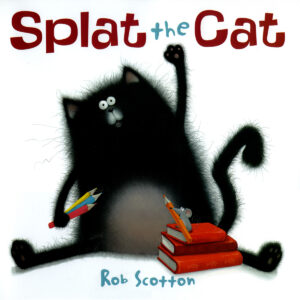 Rob had done a set of dishware around this cat named Splat and I said I want it to be a kid. Rob showed me how he could make the head bigger, the arms a little shorter, the body rounder, which made Splat more kid-like. It worked.
Rob had done a set of dishware around this cat named Splat and I said I want it to be a kid. Rob showed me how he could make the head bigger, the arms a little shorter, the body rounder, which made Splat more kid-like. It worked.
RVC: Yes, it did!
MM: One of the things I do with any book launch is have a promotional hook. That first Splat the Cat book was about going to school, so it was a back-to-school story and that helped get it on tables.
OPB: What’s the story behind Toot & Puddle?
MM: Holly Hobbie came to see me at Little Brown. She had heard about me from another artist–Jane Dyer. And Holly had just finished a 30-year contract with American Greetings where they owned everything she did with that little bonnet girl. She came to me and said, “What do you think I should do?” I told her, “Anything you want.” I mean, she’s such a great artist. She could paint with an eyelash–she’s just amazing!
The first Toot & Puddle as a story about one pig. Then we realized that if you have two pigs, they can play off each other and be two halves of a whole. And they’re charming stories.
RVC: Totally agree.
MM: The first book was cobbled together by some existing artwork. To me, it looks like the seams are showing a bit, but it all worked out fine.
RVC: I’m a big fan of Grumpy Monkey, which is another of the books you edited.
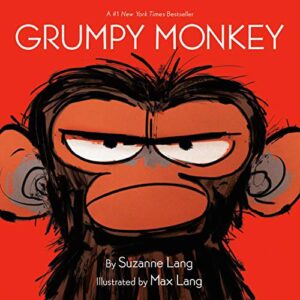 MM: The Langs are so talented that I can’t even believe it. I think they were one of the first to tap into the whole social emotional learning trend because that book comes right out and says, “It’s okay to be grumpy. You don’t have to put on a happy face.” Their books are funny, but they all have this truth–something kids need to learn.
MM: The Langs are so talented that I can’t even believe it. I think they were one of the first to tap into the whole social emotional learning trend because that book comes right out and says, “It’s okay to be grumpy. You don’t have to put on a happy face.” Their books are funny, but they all have this truth–something kids need to learn.
I want to add that I don’t deliberately publish books to teach kids anything. They get that elsewhere. If somebody gave me a book and said, “Here, this is a good book for women who can’t get along with their mothers!” I’d throw that book right back at their head. That’s not why I read books. I like to read books to read books, not to learn things.
RVC: If you learn something, it’s just a bonus. But it’s not the point.
MM: No. And if it is, there’s Sam Goldwyn, who said, “All I want is story. Let Western Union take care of the messages.”
RVC: What do you look for in illustrations?
MM: Among the first people I worked with was Tomie, who was obviously a gifted artist. I also work with a lot of animators because they have the ability to tell a story. What I’m always looking for is movement. I also look for funny because I think the world needs funny books. There just aren’t enough of them.
A lot of do at work requires me to substantiate my decisions with data. But honestly, sometimes I make a preliminary decision and then I look for the data to substantiate it.
RVC: That makes sense. The art+story package should generate a gut reaction.
MM: Yes, that’s right. I don’t like mood pieces. I don’t like fancy words that don’t add up to anything. I don’t like bad rhymes. I just want great stories.
RVC: What are your thoughts on marketing, particularly for debut picture book creators?
MM: It’s the hardest thing with picture books because we don’t market to our direct audience (because we can’t). The biggest marketing or promotion you can do for a book is to get it placement in a bookstore. I never sign up a book without envisioning where it’s going to go in the bookstore. I think about what’s going to compel a bookstore buyer say, “I have to have THIS book and not THAT one.”
Honestly, a beautiful book and a beautiful story isn’t enough. It has to fit into something that a bookseller will promote, like a holiday, or Black History Month, or some other event. You need to have that kind of promotional connection because most picture books have the shelf life of a quart of milk.
If you don’t get it out there and get it noticed, it’s gone.
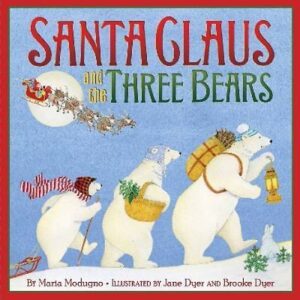 RVC: Will you talk a bit about your own writing, such as Santa Claus and the Three Bears?
RVC: Will you talk a bit about your own writing, such as Santa Claus and the Three Bears?
MM: I wrote that book on a lark for a friend. I love that classic story, and I love giving it a twist. But I don’t consider myself a writer at all.
At one point, I took drawing lessons, but believe me, there’s no hidden talent there. I just wanted to know what it felt like for an artist or writer to confront a blank piece of paper. What does it feel like to put that first mark on it?
Maybe that’s what I learned from Santa Claus and the Three Bears–I had to mentally see the story and where it was going to go before I could write it.
RVC: What’s the most important trait that you bring to the editing process?
MM: I never forget what it’s like to be a kid.
When my nephew Chris was four years old, he moved from a very old house in New England to a brand-new house in the Midwest. I asked, “So, Chris, how’s the new house?” He said, “All the doorknobs are the same.” That’s the viewpoint of a kid. They’re not in our world. They’re in a world that comes up to our waist. You have to remember that. You have to remember the things that interest them.
Kids also like funny things, but a lot of editors prefer serious things. I think the world is serious enough already.
RVC: What are some of your proudest moments as an editor?
MM: I love when a new book comes in. And I love when books hit the bestseller list. Funny books don’t win awards, though. They don’t get starred reviews either. And it took me a long time before I figured that out. By the time I figured it out, I decided that winning awards wasn’t what I was about anyway.
I come from a working-class background, so I always felt it’s my job to keep authors and artists earning money and working. I don’t like to make them wait for a response from a publisher because that time is time that they’re not making money.
RVC: A lot of writers are going to love that you said that!
MM: I’ll add this–a high point for me is working with Lane Smith. I’m in awe of him. Over and over again, he proves himself to be both brilliant and nice.
RVC: I’m not surprised. That seems to be the brand not just for Lane but also a lot of people in the kidlit industry. It’s good people and good audiences.
MM: You’re right about that.
RVC: Beyond the obvious–join SCBWI, read a lot, write a lot, etc.–what’s your advice for aspiring picture book writers?
MM: I think it’s more than just reading other books–it’s reading them critically. To do this, ask good questions.
- What did I like about this?
- What made me turn the pages?
- Why didn’t I like this?
I also encourage writers of picture books to think visually. As they write, they should see the picture that their words are going to suggest. I’m not talking about art notes, but rather how you imagine these words looking when they’re illustrated. You have to tie the two together all the time.
RVC: Alright, Maria–it’s time for the Speed Round. Are you ready for some zip-zappy goodness with super-fast questions and super-duper-quick answers?
MM: Sure.
RVC: If animals could talk, which would be the most annoying?
MM: A gnat.
RVC: If you built a picture-book-themed hotel, what would the theme be and what would the rooms look like?
MM: Classic fairy tales because they’re so popular and I’d want people to come. Either that or The Nightmare Before Christmas.
RVC: What secret talent do you have that no one would expect?
MM: I make hats. I’m an amateur milliner.
RVC: What’s your dream project in the picture book world?
MM: I’ve already lived so many of them! But my dream would be to sign books without having to go to auctions. They’re really competitive and they rub me the wrong way.
RVC: What’s the One That Got Away?
MM: There’s one every year. That’s one of the things about a picture book–different editors will envision it differently. So, if I saw a book one way and somebody else published one another way, did it really get away or was that book meant to be what it became?
RVC: What is your picture book philosophy?
MM: Don’t forget kids are going to read it.
RVC: This has been a real treat, Maria. Thanks so much!


I love this interview! Such good insight and I really love that story about her nephew and his comment on his new home, “all the doorknobs are the same” — funny but so revealing at the same time. What do kids notice? I also like that she enjoys funny picture books more than serious ones, sometimes I feel some PBs are too heavy for kids. The world’s filled with enough heaviness, let them have some goofiness and joy. Thanks for sharing!
Yeah, Maria’s great, isn’t she? Thanks for stopping by OPB, Kristin!
Among the many insights and delights in this interview is a new-to-me title — Russell the Sheep!
Off to peruse the stacks — it looks fantastic!
Russell is a hoot, Cathy. You’ll enjoy it.
Great content as an insider in the kidlit arena. It’s (as an writer and author), it’s so refreshing to hear someone working in the field to say, responding to publishers who prefer ‘serious,’ that ‘the world is serious already.’ Today, perhaps now more than ever, children need more laughter. Thanks so much for sharing your ‘story,’ Maria Modugno!
Maria brought her A game here–no doubt about it. Thanks for stopping by, Pamela!
I loved reading about her thought process. Thanks for interviewing Maria. And she’s right; it’s too bad funny books don’t really win awards. There should be a funny award!
Love the idea, Julie–more big awards for good funny picture books! If I win the Florida Lottery, I’ll look into what it’d take to set this up.
I love Maria Modugno! Truly one of the greatest, loveliest editors (and friends) in children’s books. Hi Maria! xoxo
This interview was the first time I met Maria, but it’s clear that she is awesome. Totally agree, Amy!